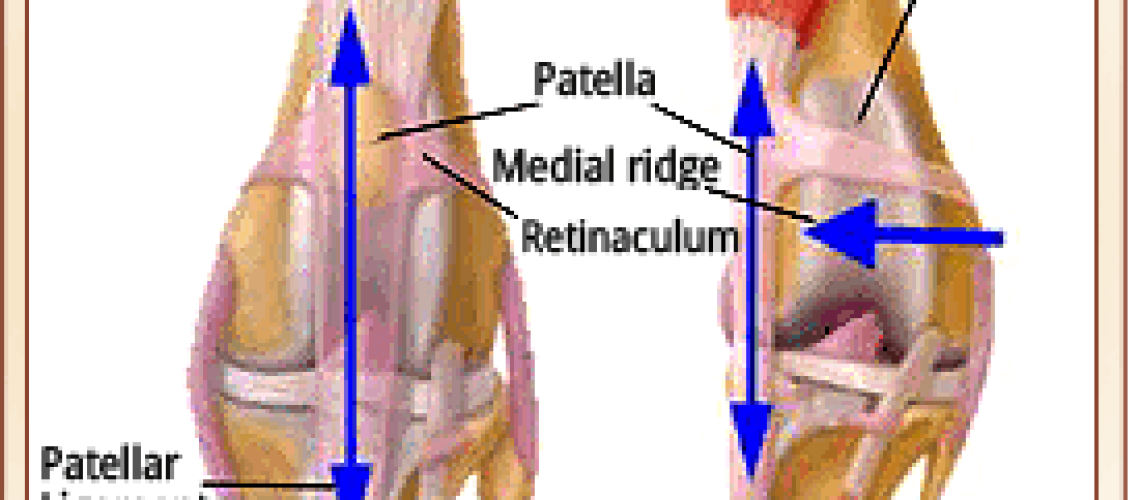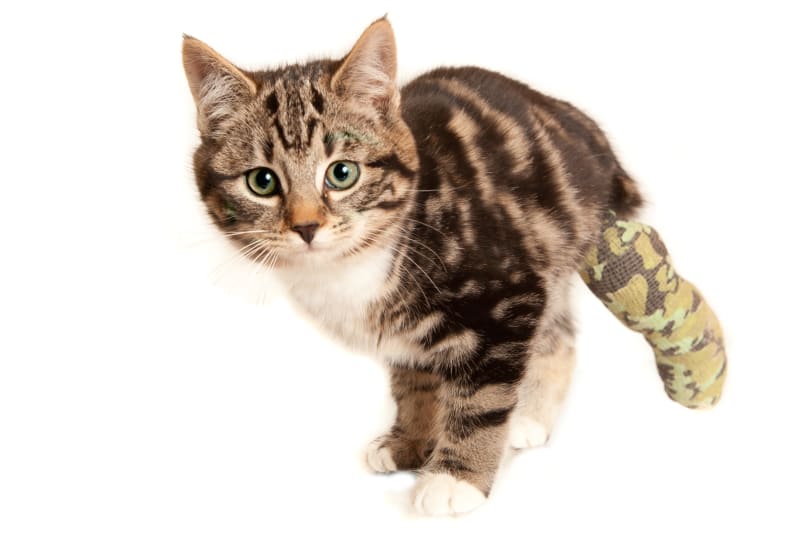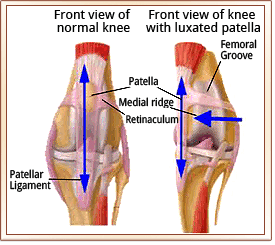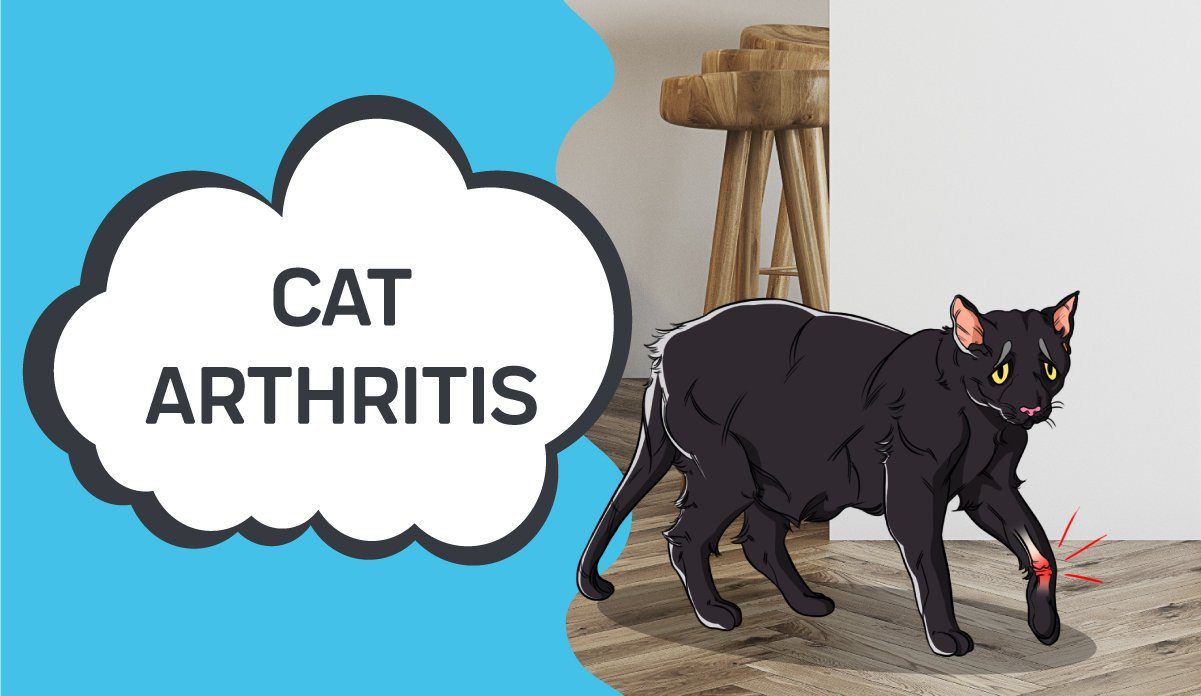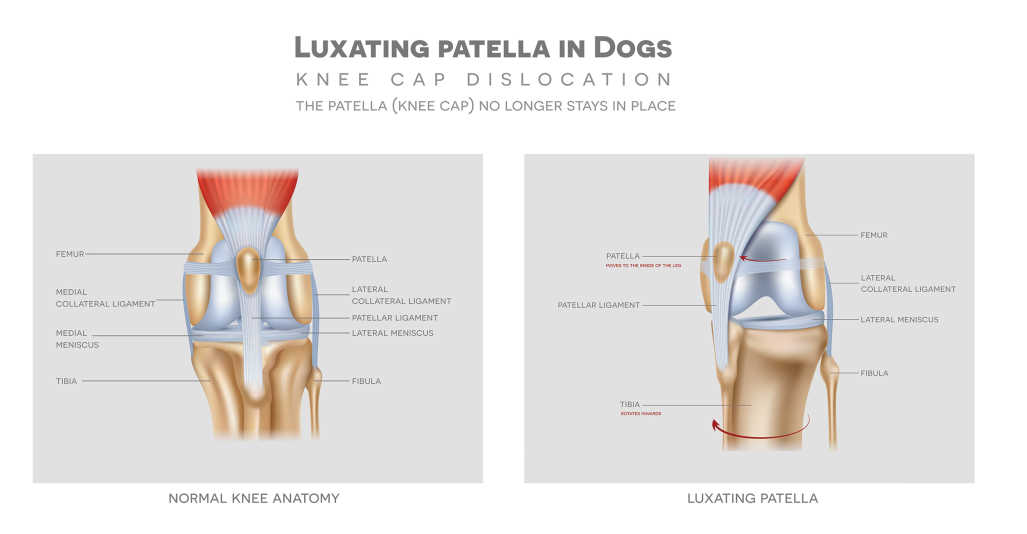Key Takeaways:
- Patellar luxation is a common orthopedic condition in dogs where the kneecap dislocates from its normal position.
- Small and toy breeds are more prone to patellar luxation due to genetic factors, while larger breeds may develop it due to trauma or injury.
- Symptoms of patellar luxation include limping, intermittent lameness, and difficulty extending or flexing the affected leg.
- Treatment options for patellar luxation range from conservative management with pain medications and physical therapy to surgical correction.
- Early diagnosis and intervention can help prevent long-term complications such as arthritis and chronic pain associated with patellar luxation in dogs.
Are you a dog lover? If so, then understanding the topic of patellar luxation in dogs could be incredibly valuable to you. Patellar luxation, also known as a dislocated kneecap, is a common condition that affects many dogs, particularly small breeds. By delving into this subject, you will gain insights into how this condition can impact your furry friend's mobility and overall well-being. Plus, you'll discover practical tips on how to identify the signs of patellar luxation and provide the necessary care for your dog. So let's dive into this fascinating topic and unlock the secrets behind patellar luxation in dogs! Get ready to become an expert in canine health and give your beloved pet the best possible care they deserve. Together, we'll ensure their happiness and comfort for years to come. Let's get started!
What is Patellar Luxation in dogs?
Understanding the condition
Patellar luxation is a common orthopedic condition that affects dogs. It occurs when the kneecap, also known as the patella, moves out of its normal position. The patella is supposed to sit in a groove at the end of the thighbone and help with leg movement. However, in dogs with patellar luxation, the groove may be shallow or misaligned, causing the patella to slip out.
The impact on mobility
When a dog has patellar luxation, it can affect their ability to move comfortably. The misplaced kneecap can cause pain and discomfort, making it difficult for them to walk or run properly. They may have an abnormal gait or limp, and you may notice them favoring one leg more than the others. In severe cases, some dogs may even become completely unable to bear weight on their affected leg.
To better understand how patellar luxation affects a dog's movement, imagine trying to walk with a pebble stuck in your shoe. The constant discomfort and altered stride would make it challenging to maintain a normal pace and rhythm while walking. Similarly, for dogs with patellar luxation, their misplaced kneecap creates an ongoing source of discomfort that hinders their mobility.
Common symptoms of Patellar Luxation in dogs:
1. Limping or favoring one leg
2. Skipping or hopping while walking
3. Difficulty jumping or climbing stairs
4. Swelling around the knee joint
5. Reluctance to engage in physical activity
Treatment options for Patellar Luxation in dogs:
There are different treatment options available depending on the severity of your dog's condition:
1. Conservative management: For mild cases where there is minimal pain and no significant impact on mobility, your veterinarian may recommend conservative management. This typically involves rest, anti-inflammatory medication, and physical therapy exercises to strengthen the surrounding muscles.
2. Surgical intervention: In more severe cases or when conservative management fails to provide relief, surgery may be necessary. The specific surgical procedure will depend on the underlying cause of patellar luxation and may involve realigning the groove, deepening it, or adjusting the soft tissues around the knee joint.
Are certain dog breeds more prone to developing Patellar Luxation?
While patellar luxation can occur in any dog breed, some breeds are more predisposed to develop this condition due to their anatomy or genetic factors. Small and toy breeds such as Chihuahuas, Pomeranians, and Yorkshire Terriers are commonly affected. Additionally, certain larger breeds like Labrador Retrievers and Great Danes can also experience patellar luxation.
Preventing and reducing the risk of Patellar Luxation in dogs:
While it may not always be possible to prevent patellar luxation entirely, there are steps you can take to reduce the risk:
1. Choose a reputable breeder: If you plan on getting a dog from a breeder, make sure they prioritize breeding for healthy joints and have a history of screening for patellar luxation.
2. Maintain a healthy weight: Obesity puts extra strain on joints, including the knees. Keeping your dog at a healthy weight can help reduce stress on their joints and decrease the likelihood of developing patellar luxation.
3. Regular exercise: Regular exercise helps keep your dog's muscles strong and supports overall joint health. However, avoid excessive high-impact activities that could potentially lead to injury.
4. Monitor symptoms: Keep an eye out for any signs of limping or discomfort in your dog's movement. Early detection and intervention can often prevent further progression of patellar luxation.
By being proactive in monitoring your dog's health and taking preventive measures, you can help minimize the risk of patellar luxation and ensure your furry friend enjoys a happy and active life.
How does Patellar Luxation affect a dog's movement?
Patellar luxation, also known as a dislocated kneecap, can significantly impact a dog's movement. When the patella (kneecap) slips out of its normal position, it causes pain and discomfort for the dog. This condition can lead to limping or an abnormal gait as the dog tries to compensate for the misalignment. The affected leg may appear weak or unstable, making it difficult for the dog to walk or run properly. In severe cases, the patella may completely dislocate and require immediate veterinary attention.
Causes of Patellar Luxation
Patellar luxation can be caused by various factors, including genetic predisposition, trauma, or developmental abnormalities. Some small dog breeds are more prone to this condition due to their anatomy and genetics. For example, Chihuahuas and Yorkshire Terriers have a higher risk of developing patellar luxation compared to larger breeds.
The Impact on Daily Activities
When a dog has patellar luxation, simple activities like jumping, climbing stairs, or even standing up from a sitting position can become challenging. The pain and instability in their knee joint make it harder for them to engage in physical activities that they once enjoyed. This limitation can affect their overall quality of life and prevent them from fully participating in playtime or exercise.
Treatment Options
Treatment options for patellar luxation depend on the severity of the condition. In mild cases where the kneecap occasionally slips out but returns to its normal position on its own, conservative management such as rest and anti-inflammatory medication may be sufficient. However, if the luxation is frequent or causing significant discomfort, surgical intervention may be necessary.
Surgical Procedures
There are different surgical procedures available to treat patellar luxation, including realignment of the patella groove, deepening the groove, or tightening the surrounding soft tissues. These procedures aim to stabilize the kneecap and prevent further dislocations. Following surgery, a period of restricted activity and rehabilitation is crucial for successful recovery.
Post-Operative Care
After surgery, it is essential to follow the veterinarian's instructions for post-operative care. This may include administering pain medication, limiting physical activity, and attending regular follow-up appointments. Rehabilitation exercises such as controlled walking and gentle range-of-motion exercises can help strengthen the muscles around the knee joint and improve overall mobility.
Are certain dog breeds more prone to developing Patellar Luxation?
Yes, certain dog breeds are more prone to developing patellar luxation due to their anatomy and genetics. Small dog breeds such as Chihuahuas, Yorkshire Terriers, Pomeranians, and Toy Poodles have a higher risk of this condition compared to larger breeds. The shape and alignment of their bones can contribute to an increased likelihood of patellar luxation.
Anatomy Factors
In some small dog breeds, their leg bones may be proportionally longer compared to their body size. This disproportionate anatomy can affect the alignment of the knee joint and increase the chances of patellar luxation. Additionally, shallow grooves in which the kneecap sits can make it easier for the patella to slip out of place.
Genetic Predisposition
Genetics also play a role in determining a dog's susceptibility to patellar luxation. Breeds with a history of this condition within their gene pool are more likely to pass it on to their offspring. Responsible breeders carefully select breeding pairs to minimize the risk of passing on genetic predispositions for patellar luxation.
Regular Veterinary Check-ups
If you own a dog breed that is prone to patellar luxation, it is crucial to schedule regular veterinary check-ups. Early detection and intervention can help manage the condition effectively and prevent further complications. Your veterinarian can assess your dog's knee joint health and provide guidance on preventive measures.
Exercise and Weight Management
Maintaining a healthy weight and engaging in appropriate exercise can also reduce the risk of patellar luxation. Excessive weight puts additional strain on the joints, making them more susceptible to injury or misalignment. Regular exercise helps strengthen the muscles around the knee joint, providing better support and stability.
Preventing and reducing the risk of Patellar Luxation in dogs
While it may not be possible to completely eliminate the risk of patellar luxation in dogs, there are steps you can take to reduce its likelihood.
Genetic Testing
If you are considering getting a dog from a breeder, inquire about genetic testing for patellar luxation. Responsible breeders often screen their breeding dogs for this condition to minimize its occurrence in future generations. By choosing a puppy from parents with good knee health, you can lower the chances of your new pet developing patellar luxation.
Weight Management
Maintaining a healthy weight is crucial for overall joint health in dogs. Excess weight puts unnecessary stress on their joints, increasing the risk of conditions like patellar luxation. Ensure your dog receives a balanced diet and engage them in regular exercise suitable for their breed and age. If necessary, consult with your veterinarian for guidance on proper nutrition and portion control.
Regular Exercise
Regular exercise helps keep your dog's muscles strong and supports joint stability. However, it is important to choose activities that are appropriate for your dog's size, age, and physical condition. Avoid high-impact exercises that may strain the knee joint, especially for breeds prone to patellar luxation. Consult with your veterinarian to develop an exercise routine that suits your dog's needs.
Supplements and Joint Health
Certain supplements, such as glucosamine and chondroitin, can support joint health in dogs. These supplements help maintain cartilage integrity and reduce inflammation in the joints. Discuss with your veterinarian whether these supplements are suitable for your dog and determine the appropriate dosage.
Regular Veterinary Check-ups
Regular veterinary check-ups are essential for monitoring your dog's overall health, including their joints. Your veterinarian can assess any signs of early joint problems or abnormalities and provide guidance on preventive measures specific to your dog's breed and individual needs.
Remember, while these preventive measures can reduce the risk of patellar luxation, it is always important to consult with a veterinarian for personalized advice based on your dog's unique circumstances.
Are certain dog breeds more prone to developing Patellar Luxation?
Common Breeds Affected by Patellar Luxation
Certain dog breeds are more prone to developing patellar luxation than others. Small and toy breeds, such as Chihuahuas, Pomeranians, and Yorkshire Terriers, are commonly affected by this condition. Additionally, some larger breeds like Labrador Retrievers and Great Danes may also be at risk. The size and structure of a dog's legs can contribute to the likelihood of patellar luxation. Breeds with shorter legs or those that have been selectively bred for certain physical traits may have an increased risk.
Genetic Factors in Patellar Luxation
Genetics play a significant role in the development of patellar luxation. Inherited factors can influence the alignment of a dog's bones and joints, making them more susceptible to this condition. Breeds with a history of patellar luxation within their bloodlines are more likely to pass on these genetic predispositions to their offspring. Responsible breeders take measures to reduce the occurrence of patellar luxation by carefully selecting breeding pairs and conducting health screenings.
List of Dog Breeds Prone to Patellar Luxation:
- Chihuahua
- Pomeranian
- Yorkshire Terrier
- Pekingese
- Dachshund
- Bichon Frise
- Poodle (Toy and Miniature)
- Cavalier King Charles Spaniel
- Lhasa Apso
- Maltese
Preventing and reducing the risk of Patellar Luxation in dogs
Maintaining a Healthy Weight
One of the most effective ways to prevent patellar luxation in dogs is by maintaining a healthy weight. Excess weight puts additional strain on a dog's joints, increasing the risk of joint abnormalities and conditions like patellar luxation. Feeding a balanced diet and providing regular exercise can help dogs maintain a healthy body condition, reducing the likelihood of developing this condition.
Regular Veterinary Check-ups
Regular veterinary check-ups are crucial for identifying and addressing potential health issues, including patellar luxation. During these visits, your veterinarian can examine your dog's legs and joints, assessing their overall health and detecting any signs of patellar luxation early on. Early diagnosis allows for prompt treatment or preventive measures to be implemented, minimizing the impact of the condition on your dog's well-being.
Tips for Preventing Patellar Luxation:
- Keep your dog at a healthy weight through proper diet and exercise.
- Avoid excessive jumping or rough play that could strain their joints.
- Provide regular opportunities for low-impact exercise like walking or swimming.
- Consider genetic testing before breeding to reduce the risk of passing on predispositions.
- Follow your veterinarian's recommendations for preventive care and screenings.
In conclusion, patellar luxation is a condition where a dog's kneecap dislocates from its normal position. It can cause pain and difficulty in walking, but with proper treatment and care, dogs can lead happy and active lives.
How do you treat a dog with a luxating patella?
For cases of grade I and grade II, the typical treatment involves using pain and anti-inflammatory medications, managing weight, and limiting exercise. Physical rehabilitation therapy can also be beneficial in helping dogs regain muscle strength and gradually return to their regular activities.
Can a luxating patella heal itself in a dog?
Surgery is the only effective solution for patella luxation; there is no other remedy. Treatment focuses on managing pain and inflammation and addressing symptoms. If left untreated, the condition can lead to the deterioration of osteoarthritis and cartilage damage, as well as an increased risk of cranial cruciate ligament disease.
How long can a dog live with luxating patella?
Certain dogs, particularly those with Grade I patellar luxation, can live with this condition for many years, potentially their whole lives. However, as the dog gets older, arthritis will develop, leading to reduced mobility and joint discomfort. Unfortunately, once arthritis occurs, it cannot be reversed.
Is it OK to walk a dog with luxating patella?
Based on the severity of your pet's luxating patella, their exercise routine may need to be adjusted to include less strenuous activities. This doesn't necessarily mean you have to dramatically decrease exercise or eliminate playtime, but it may be better to prioritize walking over jumping.
How much does dog patella luxation surgery cost?
The cost of luxating patella dog surgery varies between $1,000 and $5,000 per leg. The final price will depend on factors such as the size of the dog, the extent of the luxation, the presence of any additional injuries or arthritis, the geographical location, and whether one or both knees are affected.
How do I know if my dog is in pain with luxating patella?
Signs of a Luxating Patella in dogs include a noticeable interruption in their gait, the knee joint becoming stuck in an abnormal position resulting in the dog favoring three legs while walking. In more severe cases, the dislocation from the normal position can cause discomfort and lead to vocalization from the dog.



